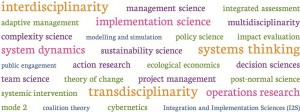
It's 119 Degrees Outside. Ready for a Blackout?
It’s HOT in the southwest.
The temperature in Phoenix, Arizona hit 119 degrees (F) on the 29th of June, a new record for the date. The heat was so intense, it led to the cancellation of 18 regional flights at the airport (the aircraft used for those routes were restricted to temperatures no higher than 118 degrees).
The extreme heat is also playing havoc with the electrical grid in the US southwest, much earlier than the late August squeeze that is routine. With everyone in the region running their air conditioners at full clip to avoid cooking (more tex-mex sous-vide in airtight homes than outdoor barbecue), there’s barely enough power available to meet demand. And at peak loads, the electrical grid is much more likely to fail.
These are killer temperatures. And if the grid fails right now, it’s not just an inconvenience.
It quickly becomes a matter of life or death.
If you and your community are relatively unprepared, the only way to meet the challenge of a blackout during extreme heat is to band together as a community. Community action during times like this can dramatically reduce the death toll.
However, community action after a crisis hits isn’t the best approach.
The real resilient solution is to produce more locally.
In this case, the ability to produce energy locally and to use it effectively is the key to long term resilience. It can transform a killer blackout into a relatively minor event.
But, resilience like this requires investments at the household and community level, by people like you and me.
For example, if most of the homes in a community produced solar energy, electricity would be not only be available when needed, the production would be peaking at the very same moment the need for it was the most intense. Further, homes with battery backups and natural gas generators would be able to continue to provide energy around the clock and, if the community was connected by a microgrid, a blackout could be completely avoided.
The only way this type of resilience gets built is if you and I build it, before disaster strikes.
So, let’s get going, before we are all cooked together.
Sincerely Yours,
JOHN ROBB






